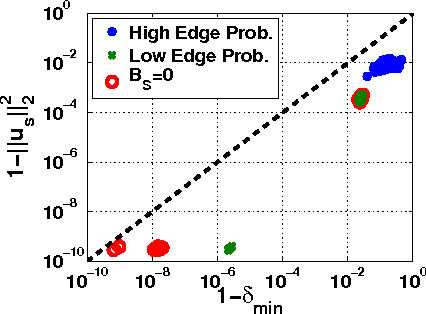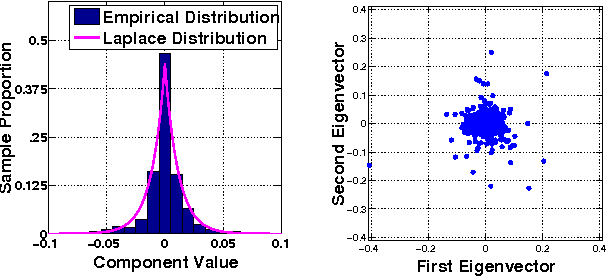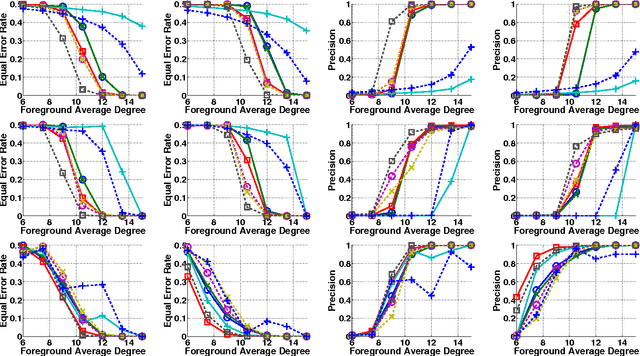A Spectral Framework for Anomalous Subgraph Detection
Paper and Code
Oct 22, 2014



A wide variety of application domains are concerned with data consisting of entities and their relationships or connections, formally represented as graphs. Within these diverse application areas, a common problem of interest is the detection of a subset of entities whose connectivity is anomalous with respect to the rest of the data. While the detection of such anomalous subgraphs has received a substantial amount of attention, no application-agnostic framework exists for analysis of signal detectability in graph-based data. In this paper, we describe a framework that enables such analysis using the principal eigenspace of a graph's residuals matrix, commonly called the modularity matrix in community detection. Leveraging this analytical tool, we show that the framework has a natural power metric in the spectral norm of the anomalous subgraph's adjacency matrix (signal power) and of the background graph's residuals matrix (noise power). We propose several algorithms based on spectral properties of the residuals matrix, with more computationally expensive techniques providing greater detection power. Detection and identification performance are presented for a number of signal and noise models, including clusters and bipartite foregrounds embedded into simple random backgrounds as well as graphs with community structure and realistic degree distributions. The trends observed verify intuition gleaned from other signal processing areas, such as greater detection power when the signal is embedded within a less active portion of the background. We demonstrate the utility of the proposed techniques in detecting small, highly anomalous subgraphs in real graphs derived from Internet traffic and product co-purchases.
 Add to Chrome
Add to Chrome Add to Firefox
Add to Firefox Add to Edge
Add to Edge